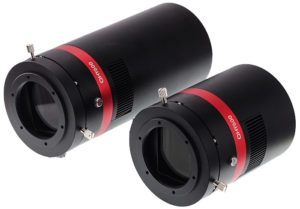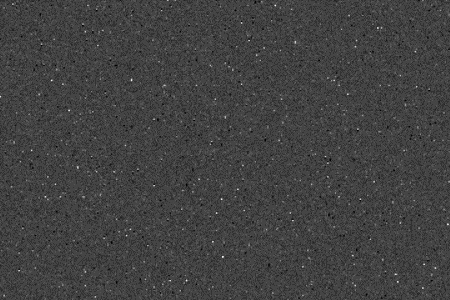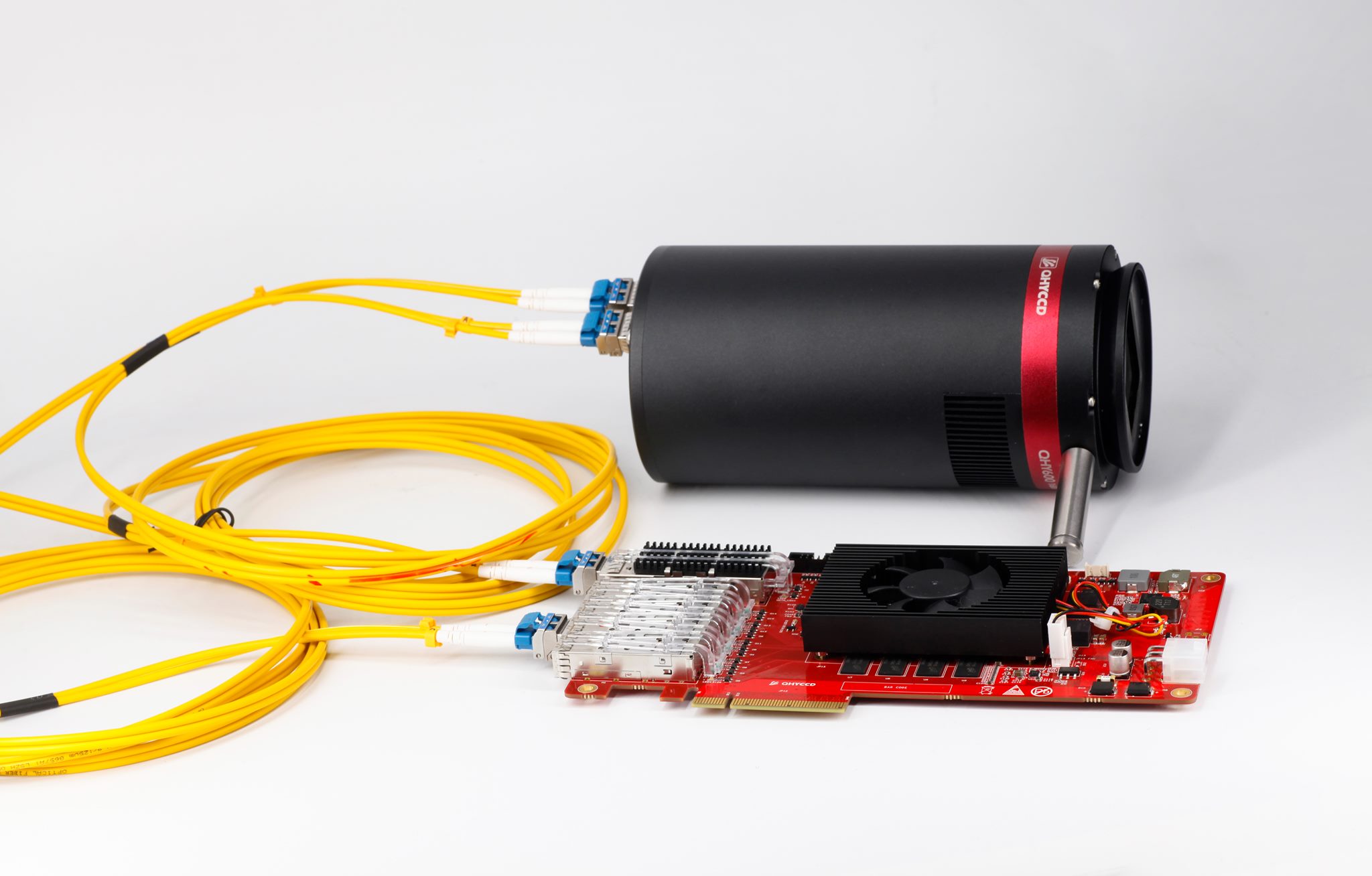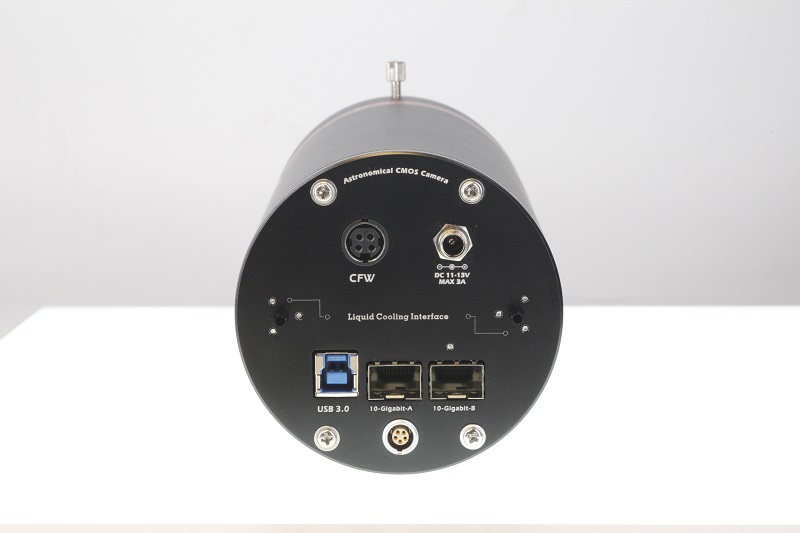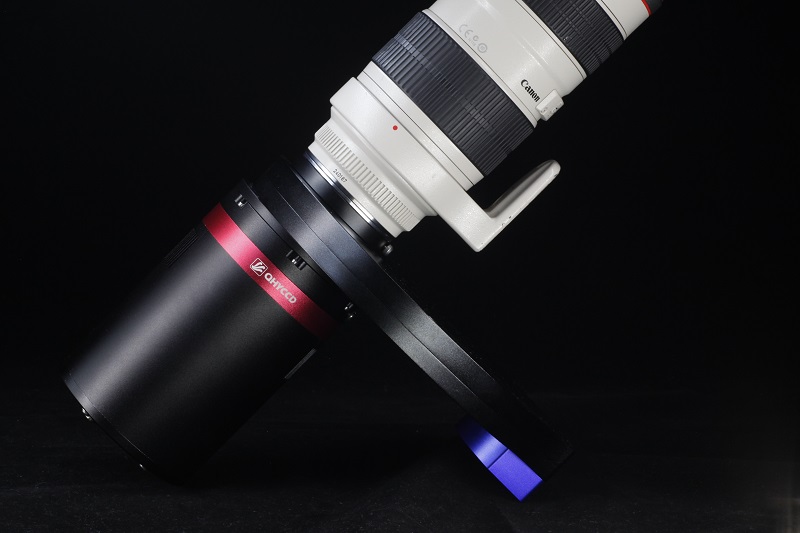LIFE-COAT™: Limited Lifetime Warranty for CMOS-optimized Baader-filters:
 A Baader Planetarium exclusive. Filters incorporating Baader Planetarium’s Life-Coat™ technology are so durable that Baader Planetarium warrants the coatings for the life of the filter. Baader Planetarium has developed Life-Coat™ using materials and processes that result in coatings which will not degrade or fail for a lifetime. Life-Coat™ coatings resist moisture, temperature extremes, and are hardened to withstand normal cleanings.
A Baader Planetarium exclusive. Filters incorporating Baader Planetarium’s Life-Coat™ technology are so durable that Baader Planetarium warrants the coatings for the life of the filter. Baader Planetarium has developed Life-Coat™ using materials and processes that result in coatings which will not degrade or fail for a lifetime. Life-Coat™ coatings resist moisture, temperature extremes, and are hardened to withstand normal cleanings.
Baader Planetarium guarantees their Life-Coat™ coatings will not peel, flake or physically degrade and will withstand repeated cleaning with fine optical cleaning equipment. The Limited Lifetime Warranty applies to the original purchaser and does not cover failure from mis-use, physical damage through improper handling, or improper cleaning.
To make a warranty claim, simply contact your retailer where you purchased the filter with proof of purchase (commercial invoice) and a detailed failure description. The dealer will then advise of the next steps.

Simplified illustration showing sequence of events in rolling and global shutter modes. Note that while a single image acquisition is represented, each mode is also compatible with 'overlap' readout, whereby the next exposure begins simultaneous with image readout.
Andor's Neo and Zyla cameras, utilizing the CIS 2051 sensor, and our newest large area Balor sCMOS camera (with its sensor being unique to Andor) were designed with a 5T (5 transistor) pixel architecture to offer choice of both Rolling and Global Shutter modes (also called Rolling and Global Exposure modes). This provides superior application and synchronization flexibility and the ability, through global shutter, to closely emulate the familiar 'Snapshot' exposure mechanism of interline CCDs.
Traditionally, most CMOS sensors offer either one mode or the other, but the sensors of Andor’s Balor, Neo and Zyla sCMOS cameras offer the choice of both rolling and global shutter mode. With these camera solutions, the user benefits from the capability to select (via software selection) either readout mode from the same sensor, such that the most appropriate mode can be chosen dependent on specific application requirements.
Read more about Rolling vs Global Shutter Mode on Andor Technology's website
A representation of the read noise distribution for a sCMOS Sensor.
sCMOS based cameras can provide a much lower noise floor than typical CCD based cameras. A low noise floor means that the camera can detect signals that would otherwise have remained hidden within the noise background which helps to produce a high-fidelity image. A low noise floor also allows for the widest possible dynamic range. One of the main types of noise that makes up this noise floor comes from “Read Noise”.
- What is Read Noise?
- What factors affect Read Noise?
Read here more about Readout Noise in sCMOS Sensors on Andor Technology's website
 The CCD architectures commonly used for high performance cameras are described on Andor Technology's website.
The CCD architectures commonly used for high performance cameras are described on Andor Technology's website.
Read more about the CCD architectures
The transit method is currently one of the most successful indirect techniques to detect extrasolar planets. To date, over 3800 exoplanets were discovered, from which the majority was found using the transit method. This technique is based on observations of a planet passing in front of its host star (= transit), as seen from an observer on Earth. The planet in transit blocks a fraction of the stellar light and thus causes the stellar brightness to decrease periodically. This periodic dimming of the stellar light is measured in terms of a transit light curve.
Read more about the challenge background and the technology solution on Andor Technology's website >>>
In the field of modern scientific-grade CCD detectors the arrival of back-illuminated CCDs and Electron-Multiplying EMCCDs has offered key enabling technology for the growing range of applications where the photon signal available is extremely low. Such applications include low-light cell microscopy and fast chemical mapping.
On the webpage of Andor Technology presents one of the key challenges associated with the use of back-illuminated, CCDs for Near-Infrared (NIR) detection, namely optical etaloning, and outlines with particular reference to a manufacturing process called ‘fringe suppression’.
Read more about the Optical Etaloning in Charge Coupled Devices on Andor Technolog's website>>>
The next-generation of high-speed data transmission technology
Special versions of the QHY 600 models:
New Technology Found in QHY600 and QHY268 Cameras:
1. USB Re-Connection with 12V ON/OFF
The QHY600 / 268 camera's USB interface to the computer will connect or disconnect by turning on and off the camera's 12V power, without the need to plug and unplug the USB cable. This technology enhances the controllability of the camera when used in a remote station. You only need to remotely control the 12V power supply of the camera, or the power of the camera AC adapter, to achieve remote USB connecting and reconnecting of the camera.
back top of page
2. Extended Full Well Capacity and Multiple Read Modes
With a pixel size of 3.76 µm, these sensors already have an impressive full well capacity of 51ke-. Nevertheless, QHYCCD has implemented a unique approach to achieve a full well capacity higher than 51ke- through innovative user controllable read mode settings. In extended full well readout mode, the QHY600 can achieve a much greater full well, more than 80ke- and the QHY268C can achieve approximately 75ke-. Greater full well capacity provides greater dynamic range and large variations in magnitude of brightness are less likely to saturate. The QHY600 / 268C have each have three user controllable readout modes with different characteristics.
back top of page
3. Random thermal noise suppression
Usually thermal noise in imaging sensors changes with time and temperature in a very reproduceable manner. However, there is another type of thermal noise peculiar to some backilluminated CMOS sensors that has the characteristic of typical fixed pattern noise but the value is not related to the exposure time. Instead, each frame appears to have its own characteristics making dark frame subtraction less effective on the total thermal noise in an image. The QHY600 models / QHY 268 C/M uses an innovative suppression technology that can significantly reduce the level of such random noise.
WITHOUT QHY NOISE-SUPRESSION technology
WITH QHY NOISE-SUPRESSION technology
[br]back top of page
4. 2 x 10 Gigabit interfacees fpr ultra-high-speed optical fiber transmission
The two professional models of the QHY 600 are prepared for 2 x 10 Gigabit fiber optic interfaces, which can be optionally enabled at extra cost. In addition, a Fiber PCIE Graber Card is required. With Gigabit interfaces, QHY has introduced the next generation of high-speed data transmission technology. This is a revolutionary leap beyond USB 3.0 transmission technology and solves several important shortcomings of USB 3.0 transmission: limited speed, limited distance and reliability.
back top of page
QHYCCD Fiber PCIE Graber Card. Support PCIEX8, Four 10G Fiber Input
- Limited Speed
Although USB 3.0 is quite fast it still cannot fully meet the maximum speed requirements of the latest generation of CMOS image sensors used in the QHY600 PRO models. For example, the IMX455 chip used in the QHY600 can produce four 16-bit, 60 Megapixel frames per second. In this case, the amount of data transferred per second is 120 * 4 = 480MB and the real-world maximum transmission speed via USB3.0 can is generally not much more than 300 MB/s. Via the USB 3.0 interface, image transfer is limited to 2.5 frames per second. In contrast, a transfer speed of up to 2000 Mb/s can be achieved via the 2 x 10 Gbp/s fiber optic interfaces.
- Limited Distance
USB 3.0 transmission is generally stable over a limited distance of about 2-3 meters. An active extension cable is usually required for more than 3 meters but even with an active extension the cable may only reach about 15 meters. However, transmission over optical fiber can easily be done at distances up to 300 meters (remote operation !).
- Stable transmission without electromagnetic interference
As we know, the propagation of light is not affected by electromagnetic radiation, so transmission through optical cables has very high reliability. There is no conductive medium between the camera and the computer, so it is not affected by various sources of static or leakage effects.
Note: Free switching and upgrading to the fiber optic interfaces is also possible at a later date for the earlier models QHY 600 - Early Bird (EB) and the QHY 600 - PRO - L.
back top of page
5. 1GB / 2GB oversized DDR3 memory
The extremely large number of individual pixels of the latest generation of CMOS sensors leads to increased memory requirements, both for temporary intermediate storage and permanent storage on the computer. For example, the QHY600 Sony IMX 455 sensor produces about 120MB of data per frame. Transferring such a large file sizes necessarily requires the camera to have sufficient memory. The QHY600 models / QHY 268 C/M has adopted a large-capacity memory of up to 1GB (QHY600 PH-L/ QHY 268) and 2GB (QHY600 PRO). This large image buffer meets the needs of high-speed image acquisition and transmission of the new generation of CMOS sensors, making capture of multiple frames smoother and less stuttered, further reducing the pressure on the computer CPU!
back top of page
6. FPGA – Large-capacity flexible hardware programmable technology
The QHY600 mdoels and QHY268 C/M has a million-gate, 20nm process programmable Field Programmable Gate Array chip. The camera firmware itself only occupies 10% of the resources, so 90% of the hardware logic resources can provide users with many custom functions. In the QHY600 PRO model and QHY268 C/M these functions include high-performance GPS trigger imaging, hardware time stamp, high-precision external trigger, continuous mode with latent image elimination, two readouts to reduce readout noise and multi-camera high-precision synchronous shooting and so on to meet a variety of complex application needs.
back top of page
Special versions of the QHY 600 models
A Optional water-cooling
QHYCCD accepts orders for QHY600 PRO cameras customized for water-cooling. The water cooling must be firmly ordered with an order, a later retrofit is NOT possible. Compared with air cooling, water cooling has the following important advantages:
- No vibration. Air-cooling requires the use of a fan inside the camera that may induce small vibrations. Even the highest quality fan cannot avoid some effect on the FWHM (full width at half maximum) of stellar images on certain telescopes. Long focal length optical systems are more sensitive to this effect. However, water cooling achieves temperature reduction through the slow flow of water. There is no moving mechanical component to cause vibration of the camera, eliminating any negative effect on the image.
- No hot air turbulence. For optical systems like RASA and Hyperstar where the camera is placed at the secondary position, air turbulence is not generated. When an air-cooled camera is installed infront of the optics, the hot air generated by the air-cooled system passes through the optical path and can generate seeing effects. Water cooling does not produce hot air discharge. The heat is carried away by the liquid so there is no such effect.
- Greater Cooling Delta T. With water cooling, the maximum cooling temperature is about 10 degrees Celsius lower than the maximum temperature achieved with air only. This has a particularly positive effect for long exposures and when used under tropical night temperatures.
back top of page
B Short back-focus version
All three QHY models (PRO, PHOTO and LITE) are also available as short back focus (BFL) versions. Here, the backfocus is only 7mm, instead of the usual 17.5mm, behind the camera body. They are specially designed for the adaptation of Canon and Nikon lenses. An off-axis guider and filter wheels can be integrated. More information at QHYCCD about the BFL version can be found here.
In order to meet the limited back-focus requirements of certain optical configurations of filter wheel and lens or for instruments such as spectrometers, etc., the QHY600 models are also available in a short back-focus version. Here the distance between telescope mount and sensor plane is only 7mm. This custom version requires advance booking. This version also provides a solution for chip tilt adjustment, in order to be able to correct a possible tilting of the sensor plane against the telescope optical path. However, because the glass window of the short back-focus version is closer to the CMOS chip, the risk of condensation is greater than the standard version with 17,5mm even though the sealed window glass heating plate is also integrated. QHYCCD provides a corresponding solution to this situation. Nevertheless, it is recommended that users without such special requirements choose the standard version.
[br]
back top of page
Two new Plugins for Steeldrive II: TheSkyX and Indigo
Since its release in April this year, the [product sku="2957165"] has become more and more popular. Already in spring we passed on all necessary data to external developers, so that they can write plugins for their software. Two such plugins are now available, see below.
 TheSkyX
TheSkyX
A plugin for the native support of SteelDrive II by the Astronomy-Suite TheSkyX is now available for download at rti-zone.org.
TheSkyX is a comprehensive professional astronomy software, which enables the control of all components of an observatory, as well as the planning of observations. TheSkyX supports Windows, macOS, Linux and ARM (Raspberry PI 3).
[br]
INDIGO
To use the SteelDrive II with INDIGO nutzen zu können, you must download Software-Version 2.0-95 or higher.
INDIGO
is a free, platform-independent standard for controlling astronomical observatories. The network-based client-server approach of INDIGO enables the simultaneous control of any number of devices connected to different distributed computers.
Especially the INDIGO Sky image for the RaspberryPI enjoys popularity to make its telescope network compatible including mount, camera, focuser, etc. INDIGO is available for Linux, macOS and ARM.
[br]
 A Baader Planetarium exclusive. Filters incorporating Baader Planetarium’s Life-Coat™ technology are so durable that Baader Planetarium warrants the coatings for the life of the filter. Baader Planetarium has developed Life-Coat™ using materials and processes that result in coatings which will not degrade or fail for a lifetime. Life-Coat™ coatings resist moisture, temperature extremes, and are hardened to withstand normal cleanings.
A Baader Planetarium exclusive. Filters incorporating Baader Planetarium’s Life-Coat™ technology are so durable that Baader Planetarium warrants the coatings for the life of the filter. Baader Planetarium has developed Life-Coat™ using materials and processes that result in coatings which will not degrade or fail for a lifetime. Life-Coat™ coatings resist moisture, temperature extremes, and are hardened to withstand normal cleanings.



